Logística de Transporte
Industrias
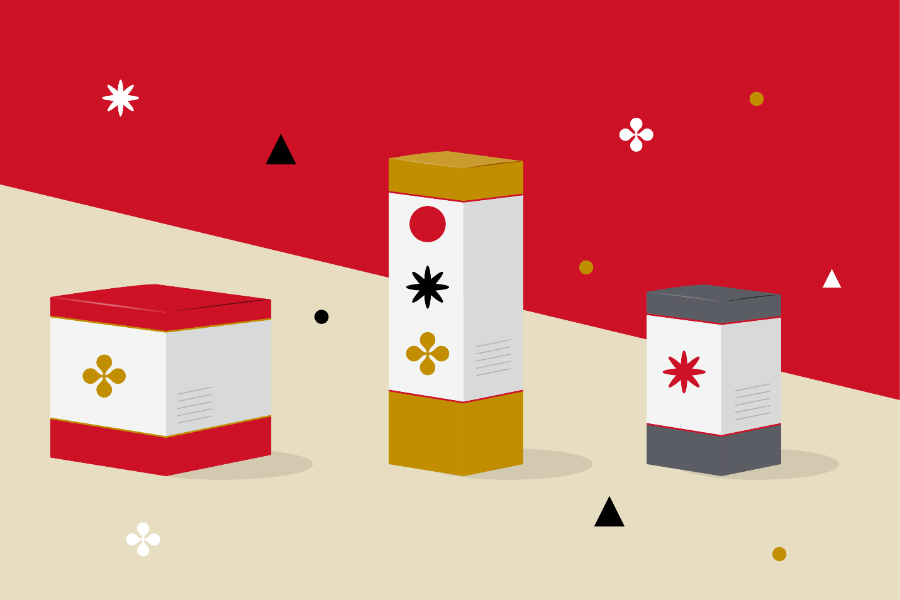
[Updated post from June 10, 2021]
E-commerce packaging may have started as a practical exercise to protect items in transit, but it's rapidly evolved into a powerful branding and marketing strategy.
Today's online shoppers don’t just expect to receive their goods in a timely manner; they also want to be delighted by the post-purchase experience. This is where branded e-commerce packaging can make all the difference to your ability to attract and retain customers.
In this guide, we're going to cover how you can create a winning e-commerce packaging design, including all the actionable tips and examples you need to tell a compelling story about your brand.
E-commerce packaging refers to the materials you use to protect your product in transit and establish a clear brand identity. While packaging is often an afterthought in e-commerce, the design you choose has an impact on everything from your shipping costs to your digital marketing strategy. Ensuring that you choose the best e-commerce packaging for your business is key to creating a positive customer experience that helps your business to grow.
Customers receiving damaged or defective products is hardly going to assist you in building brand loyalty.
Your packaging materials are your most effective tool for keeping goods safe in transit and preventing this worst-case scenario. If your brand is regularly transporting fragile items, durable packaging such as boxes and filler such as Styrofoam peanuts are going to be important investments for extra protection.
Online retail has become crowded with brands selling similar or even the same products. This makes it challenging for independent sellers to stand out from the crowd and create a unique selling proposition. After all, why should customers keep shopping with one brand when they can buy those items elsewhere?
While your SKUs might not be unique, your brand certainly is. In a competitive landscape, building brand equity is a must to keep customers engaged.
Branded e-commerce packaging is a powerful tool to help online retailers build brand recognition and ensure that customers associate your business with positive qualities, such as attention to detail or premium offerings.
The moment of delivery is the first impression that customers receive of your brand - and you want it to be a lasting impression. A novel and enjoyable post-purchase experience helps to boost brand loyalty, which is the key to growing customer lifetime value.
Retail packaging is a valuable touchpoint to this end; it shapes a customer's experience and feelings towards your brand, depending on the packaging you choose. Elements such as custom boxes, free samples, and thank you notes all help to create the perception of additional value, which in turn fuels repeat purchases.
In the age of social media, branded e-commerce packaging is part and parcel of your marketing strategy (no pun intended!) Attractively packaged products, such as custom printed boxes or custom printed tissue, make a concise visual pitch for what your brand is about and cater to the growing demand for compelling digital content.
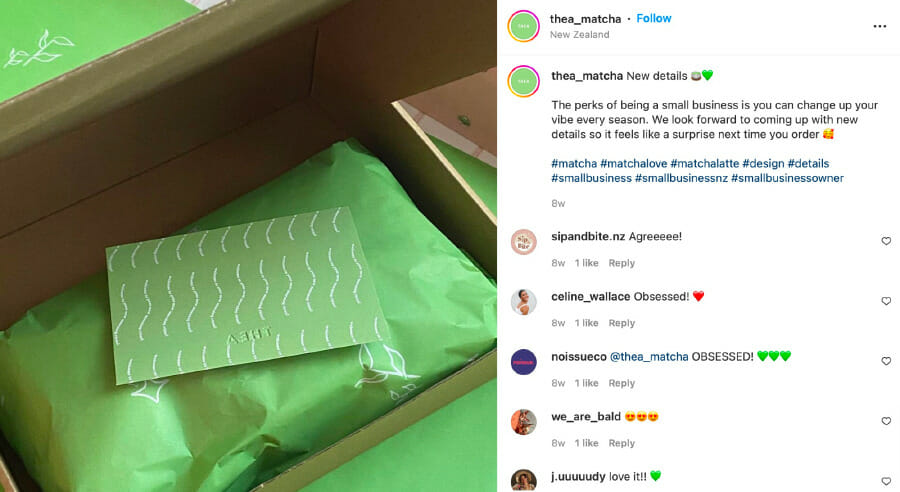
For example, you can prime your followers for purchases by showing them the kind of unboxing experience they will receive when they place an order with you. Branded packaging is an enticing value proposition that showcases that you aren't like regular e-commerce brands; instead of giving them a plain cardboard box, you're actively investing in every touchpoint.
When you've decided your e-commerce packaging requires a refresh, it can be difficult to know where to begin. Ultimately, designing effective e-commerce packaging comes down to three main considerations:
All these areas require careful consideration to ensure that your design is appropriate for your needs:
Your product catalog should always be your starting point when choosing e-commerce packaging. They are some key logistical considerations that will dictate the kind of packaging you'll need, such as:
For example, small, lightweight products such as jewelry are better suited to slimmer packaging types like a self-sealing poly mailer. This lowers the DIM weight of your packages for cheaper shipping costs. It also prevents you from needing a high amount of packing filler to stop items from moving around in transit.
Your brand's intended audience will have a big influence on your e-commerce packaging.
For example, not all boxes in e-commerce are alike. There's a big difference between plain cardboard versus a custom-branded box. The best option will be dictated by the preferences of your ideal customer.
If you're a high-end retailer, your customer is likely to expect deluxe, high-quality packaging. But if you're an eco-friendly brand that puts sustainability at the heart of your branding strategy, these embellishments may be considered wasteful by your audience.
In sum, your branded packaging should reflect your customer's values and what they look for in the brands they support. This provides confirmation and reassurance that they've made the right purchasing decision.
As an e-commerce business, your packaging considerations will be very different than in physical retail. Branded packaging bound for the store shelf is all about aesthetics and how to entice consumers to interact with products. But e-commerce packaging for online orders requires a bigger focus on durability and fulfillment costs.
For example, a large, colorful box will look impressive sitting on your customer's doorstep. But e-commerce businesses will have to swallow some hefty shipping fees due to the higher DIM weight, multiplied by hundreds of orders, and your choice of branded e-commerce packaging could cut too far into your product margins.
Once you've decided on your design and performance requirements, it's time to choose your e-commerce packaging. There are a variety of options available, depending on your product specifications and the customer experience you want to create.
Product packaging can be divided into two main types; exterior packaging and interior packaging.
Exterior e-commerce packaging is what protects your product during the transit process, while interior e-commerce packaging surrounds your product within the outer packaging to ensure it doesn't move around.
A shipping box is what we would recognize as a regular cardboard box, commonly used for moving house or more commonplace e-commerce deliveries. Shipping boxes are sturdy, relatively cheap, and a great form of return-ready packaging. They also come in a variety of sizes to cater to different items within your product catalog.
Mailer boxes are more presentation-focused than shipping boxes, as they have tabs at the front to create a clean opening for the customer. This makes them popular with subscription box brands, as well as gift box services and luxury food products. They can also be custom printed in a variety of colors to suit your branding.
Rigid boxes feature a two-piece design of a box and lid, which fit together for an extremely flush fit. Apple is famous for using this style of box for its iPhones and Macbooks, which has helped to give the brand the polished and high-tech feel it's famous for.
Rigid boxes are usually made out of chipboard, which is extremely strong and resistant to chipping or denting. This makes them a favorable design for more fragile products, such as electronics or fragrances.
Poly mailers are extremely lightweight and weatherproof, which makes them a good option for apparel and other soft items that don't require as much protection. Most poly mailers are made from plastic, but there are a growing number of eco-friendly compostable options available to help to reduce packaging waste.
Padded mailers are usually made out of paper or plastic with a lining of bubble wrap to protect fragile products. They're well-suited for smaller e-commerce orders that don't warrant using a box, which helps to lower fulfillment costs.
Tissue paper is a valuable addition to branded e-commerce packaging because it's incredibly versatile. It can be used to line the inside of boxes, gift wrap products, or to add a bit more drama and flair to your unboxing experience. Best of all, it's cheap and easy to purchase in bulk.
Using some form of packing filler is vital to ensure that products are protected in the event of a parcel being dropped or damaged. Packing peanuts and air pillows are two low-cost and effective options. However, these aren't easy to recycle, and you could end up frustrating your customers by saddling them with packaging they can't easily dispose of.
Although a pricier option, crinkled paper is great for businesses who want a packing filler that gives off a more premium feel. Because it's a lot denser than traditional packing peanuts, it also helps to make your box look fuller for better product presentation. You can also look for recycled paper to make your design more eco-friendly.
It's important to make sure that items aren't rattling around when your package is in transit, as this could spoil your product presentation or result in damage. Corrugated cardboard or polystyrene products inserts will help to keep products to place for the final reveal when your customer opens their box.
Smaller packaging accessories such as stickers and tape are very useful for sealing boxes or paper together for a tidier look. While you can use plain stickers, this is a great opportunity to showcase your brand by using custom sticker or tape designs. A few extra stickers can even be used as freebies to delight your customer!
In e-commerce, the moment of delivery represents the first tangible touchpoint with your brand. By curating a memorable unboxing experience, you can ensure a positive post-purchase encounter that puts your customers on a path to purchasing from you again.
According to Dotcom Distribution, 68% of online shoppers report that branded or premium packaging makes a brand appear more upscale, while 61% say that branded aesthetics get them more excited about receiving/opening a package.
In sum, custom e-commerce packaging allows you to shape your customers' perception of value. When they receive an eagerly anticipated product dressed up in gift-like packaging, it's a powerful statement that your brand goes the extra mile for customers.
Check out our full guide on creating a memorable unboxing experience for your brand.
Custom-branded packaging can be a simple or a complex piece of design work, depending on your budget and how elaborate you want it to be. To create an enjoyable and seamless customer experience, your design ideas need to consider three key elements:
Branding is one of your biggest considerations of the packaging design process. To foster brand familiarity during the post-purchase experience, you need to make sure that your packaging is cohesive from end to end. This includes the following:
For example, your logo and brand colors should take a prominent role in your design to ensure that customers recognize their delivery when it arrives. This helps to build anticipation and excitement for the unboxing, which creates a more engaging experience for customers. Custom stickers or packing tape are excellent places to put your logo, as they provide a strong focal point in your design.
It's also important that you think about how your custom e-commerce packaging compares with your competitors. Your design should be distinctive enough that it's not likely to be confused with any other brands. Whatever design you choose, you want to be the only retailer that comes to mind.
Ultimately, custom e-commerce packaging must accomplish a certain purpose – or even several purposes. As fun as it is picking out your pantones or tissue paper, you need to resist the temptation to stray from your core functionality requirements.
Depending on the selling channels your e-commerce packaging is being used in, it will need to accomplish some or all the following:
A custom packaging design is a powerful tool for experiential marketing. Every aspect of your product packaging design should aim to increase engagement and the perceived value of the purchase – from the outer box design to the final product reveal.
These questions will help you to reflect on the kind of unboxing experience you want your customers to have:
It's entirely possible to implement custom packaging into your dropshipping strategy. This is a great approach for brands who want to give their customers a cohesive brand experience from end-to-end, as your customer may not be aware that their order is being fulfilled and shipped by a third party. Plain packaging is overwhelmingly used within dropshipping to save money, so a custom packaging design can give your dropshipping business a major competitive edge.
Designing your own packaging sounds like an intimidating undertaking, especially for small businesses that may not have an in-house designer. So, should you consider hiring a graphic designer or packaging designer to manage the process for you?
The answer all depends on how elaborate you want your packaging design to be. If you want something with a significant graphic design element, a designer may be helpful. But if you're interested in a relatively simple design involving your existing logo, it may not be necessary to bring in an outside design service. If someone on your team has experience in Adobe Illustrator, it's easy enough to create a DIY design. However, it's important to seek your printer's advice on the template being used and any file format requirements.
Some packaging suppliers, such as noissue and ARKA, offer intuitive online tools that allow you to design and submit your chosen packaging at the time of ordering. This is a great way to save on costly design consultations or mock-ups.
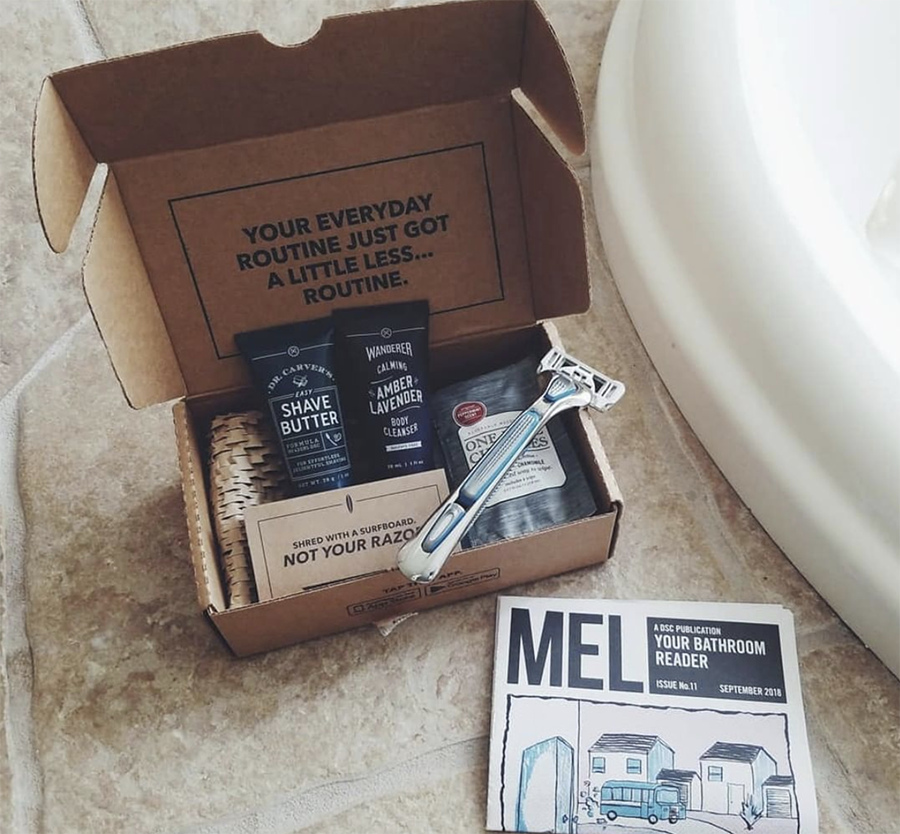
Dollar Shave Club is famous for disrupting the personal grooming space, but also for its paired-back, refreshingly simple product packaging design. Their embrace of plain cardboard and a clean typeface is a great representation of their attitude towards shaving and finding ways to minimize hassle. It's a great lesson in how minimal packaging designs can actually stand out in a sea of bright colors and embellishments.
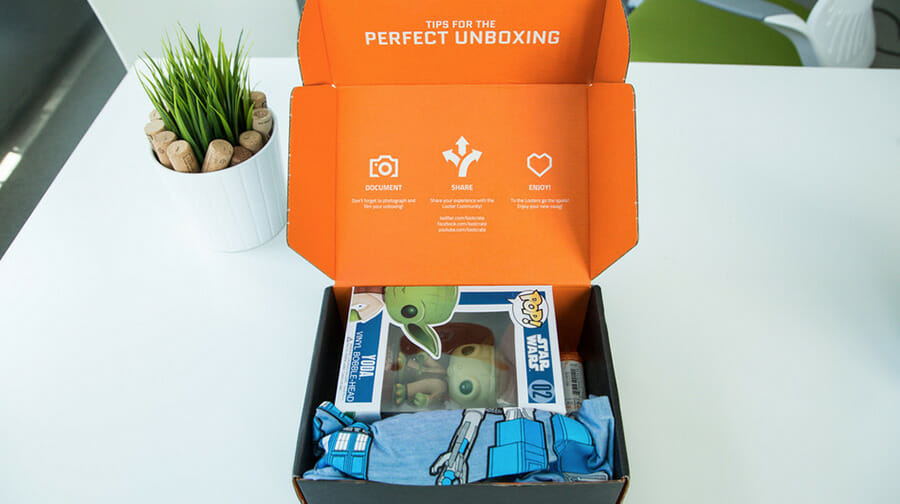
Unboxing experiences are ready-made social media content. Pop culture subscription box LootCrate has cleverly integrated omnichannel sharing into their box design by giving their customers ‘tips for the perfect unboxing' – which include sharing a photo or video of their unboxing experience with the rest of the community. This sophisticated UGC strategy is a great way for the brand to encourage word-of-mouth marketing.
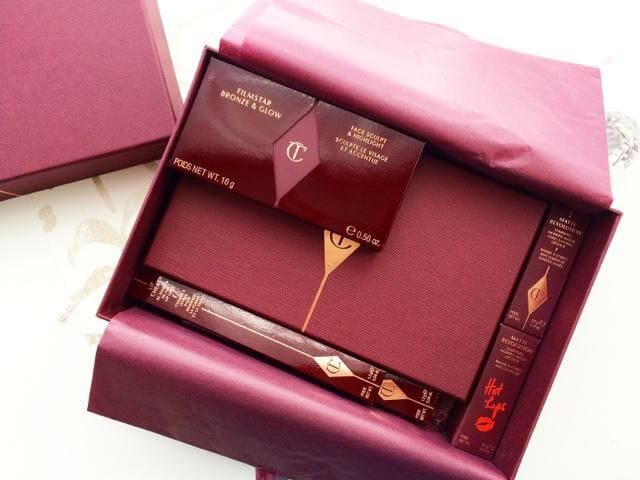
When customers are paying for premium products, they expect a premium brand experience. British cosmetics brand Charlotte Tilbury stepped up to the plate with their limited edition ‘mystery box', which contains a selection of best-selling products at a 50% discount. To help justify the high price point, Charlotte Tilbury created a deluxe brand experience using branded boxes and matching tissue paper. This helps to boost its value perception and entice customers with the promise of a luxury experience.
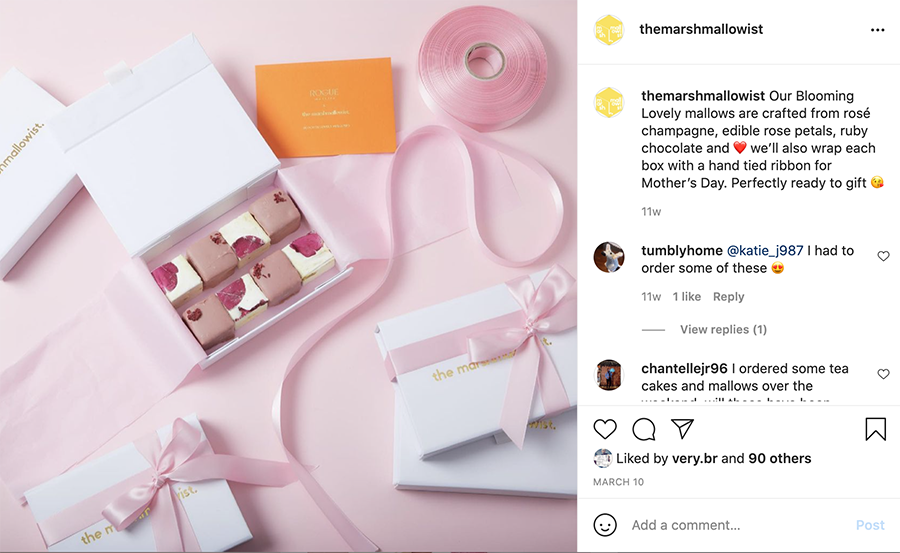
There's nothing like a beautifully-wrapped box to get your customer's attention when the holidays are coming up. Gourmet marshmallow manufacturer The Marshmallowist created a great marketing pitch in this Instagram post by showing off the experience that mothers will receive when opening their box of marshmallows on Mother's Day. It's evocative and visually appealing – a great gift for a special day!
Is your business ready for its next design project? Designing e-commerce packaging may feel like a major undertaking, but following the steps above will set you on the path to creating a winning design that tells a compelling brand story, boosts conversions, and drives customer loyalty.
Now is the time to take stock of your current e-commerce packaging and start thinking about how you can refresh it with a bigger focus on your ideal customer and key selling channels. Remember: Even a small investment in custom packaging can make a huge difference to your brand equity!